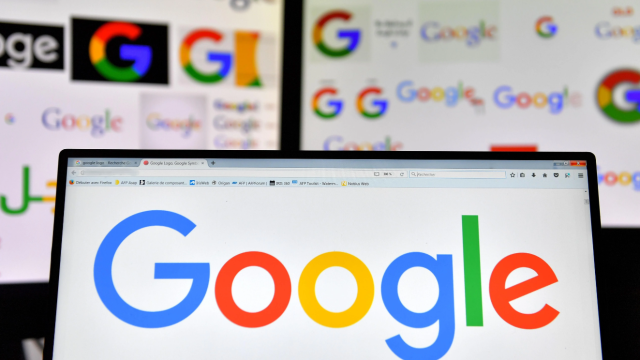We’re all familiar with Google’s successes. Most folks reading this probably use one of the company’s services every day, be it Google Maps, Search, Android Auto, or Chrome OS. But for every megahit, there is a lengthy list of duds — apps, social platforms, or hardware that, for one reason or another, never reached the heights of Google’s flagship products. Some of these extinct relics were memorialised in mainstream media while others quietly came and went without making much noise.
Whether you’re a a diehard Google fan or an Apple fan looking for ammo against your Android-touting friends (hi, Flo), join us on this trip down memory lane while we look at some of Google’s most fascinating failures, including a few we wish had been given a fighting chance to succeed.
Keep in mind that while we’re highlighting some of the more interesting cancelled products, this is by no means a comprehensive list. For that, check out Killed By Google.
Nexus Q
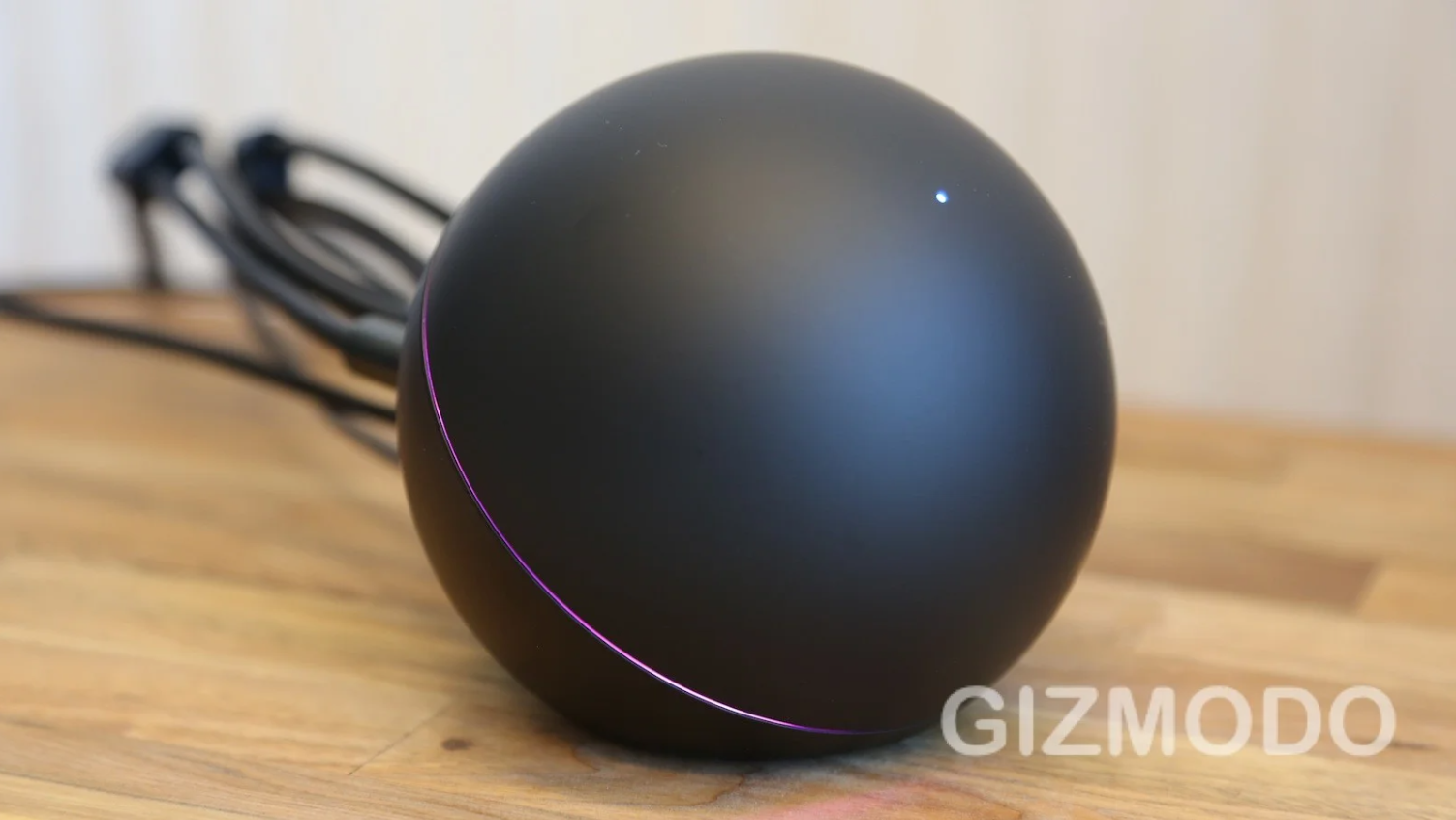
What was Google thinking with the Nexus Q? I guess it looks cool? Apart from its eye-catching spherical design, the Q brought little to the table. It didn’t help that describing this orb’s purpose required a flowchart. The most succinct definition is that the Nexus Q was a media streaming device that acted as a receiver for audio and video content — think Chromecast meets Chromebook Audio…sort of. It was similar in ways to current streaming boxes, except much more limited and with an emphasis on providing hi-res sound via a built-in amp.
Why did it fail? For so many reasons. Instead of having its own navigable OS, the Q could only be controlled from an Android tablet or smartphone. If you didn’t own one, you were out of luck. Worse yet, the Nexus Q could only stream from Google-owned services (Google Music, Google Play, and YouTube), meaning it lacked support for some of the most popular streaming apps, including Netflix and Spotify. Did I mention it cost $US300 ($416)?
Google Glass
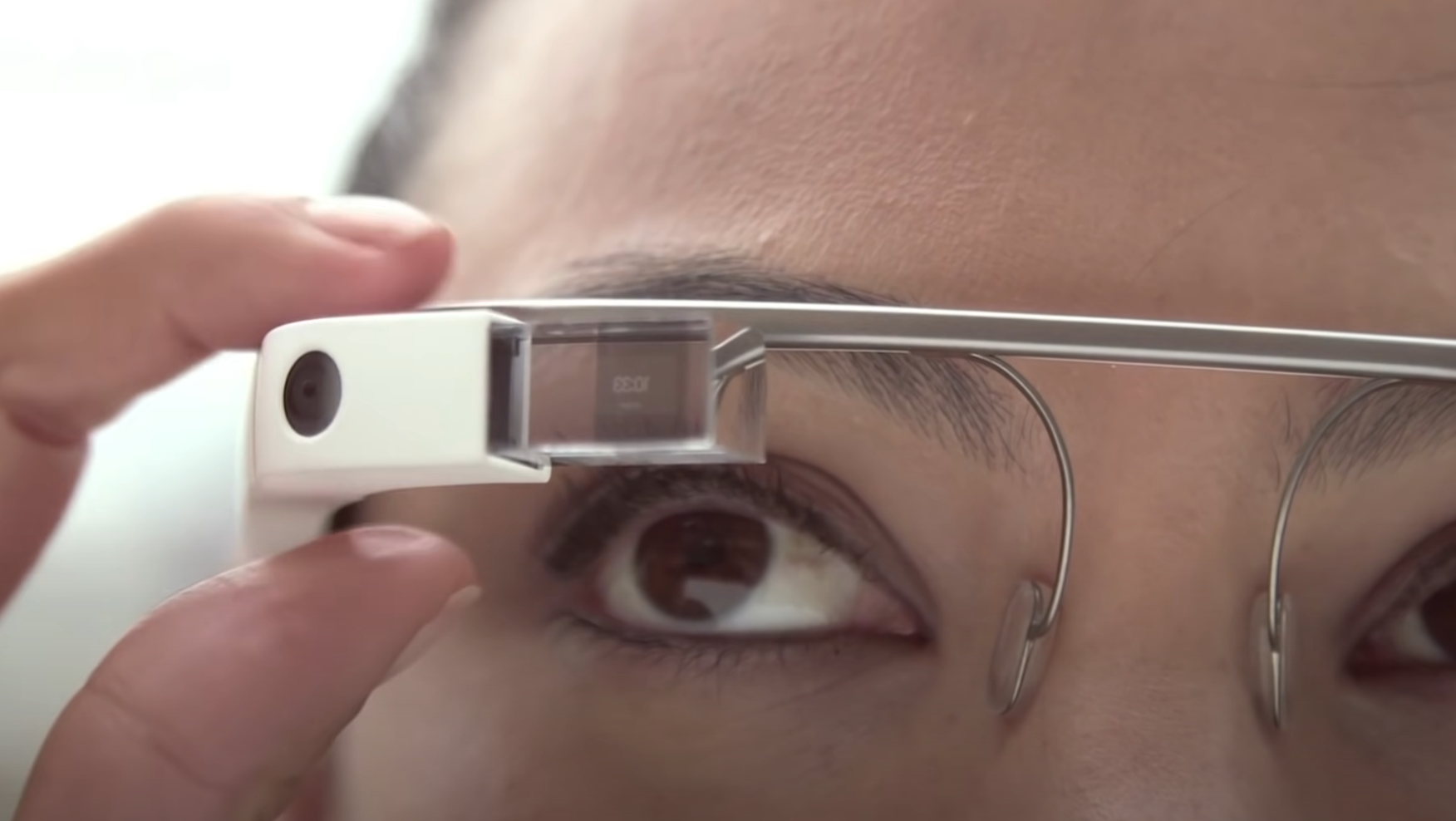
Oh, how fun it is to joke about Google’s most public failure. Google Glass may one day be viewed through a clearer lens as the first foray into what could be the future of computing. Until then, it will be remembered as an ugly pair of glasses that sold for $US1,500 ($2,082) and gave everyone the creeps for its ability to record people without them knowing.
Glass’ demise was caused by a series of failures, not any one reason. If there was a final blow, it was controversy surrounding the built-in camera, which made people fear their privacy was being violated. Glass was banned from theatres, bars, and restaurants, and at least one tech reporter was reportedly physically assaulted for wearing it outside of a bar.
Concerns about how people were using Google Glass led to the endearing term “glasshole,” which you can probably decipher yourself. Apart from privacy issues, Google Glass was too expensive to not be cool and didn’t offer enough functionality. Still, we could one day look back on Glass as a (flawed) pioneer of what might eventually replace the smartphone.
Pixel Slate
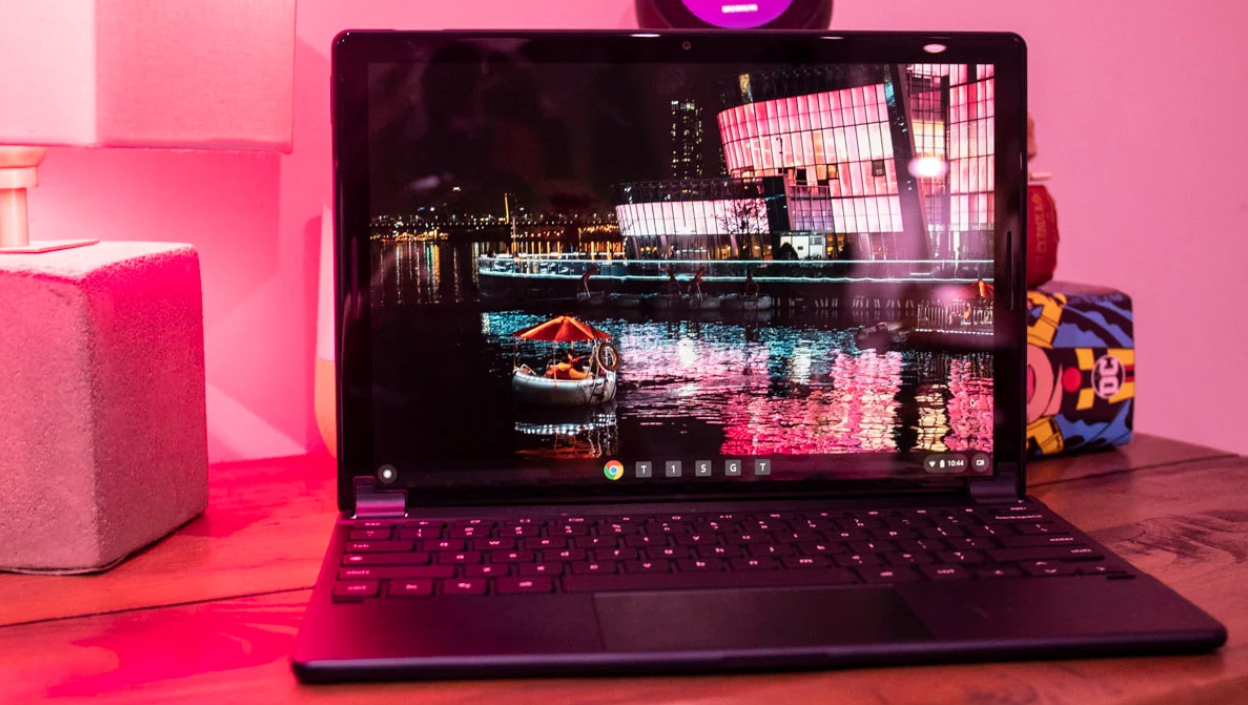
Here is a product that seemed like a good idea, looked the part, and then fell flat on its face at launch. The Pixel Slate was a detachable tablet similar to Microsoft’s Surface Pro, except it was a Chromebook running Google’s Chrome OS. The Pixel Slate launched at a time when it appeared Android tablets had conceded to the iPad and were on the verge of extinction.
But then something strange happened: the Pixel Slate was a buggy mess when it went on sale in 2018. It failed to gain a foothold in the market, and Google said it was done making tablets within months. The story doesn’t end here, because as the Pixel Slate was tanking, Android tablets were making an unexpected resurgence thanks to Samsung’s Galaxy Tab series. This takes us right up to 2022, when Google teased an upcoming Pixel tablet running on Android instead of Chrome.
Google Tango
Another case of being ahead of its time, Tango was Google’s early effort to bring augmented reality to phones. The problem was the approach. Where modern AR mobile platforms can use the hardware already found within your smartphone, Tango required phone makers to implement expensive camera hardware to build 3D meshes of spaces. While Tango itself was largely praised, the few phones that supported it were criticised for being chunky, expensive, and sluggish. Tango also suffered from the same issues plaguing current AR platforms, in that there weren’t enough compelling apps, and those that promised exciting experiences were half-baked.
Tango was eventually discontinued, but its soul lives on in ARCore, Google’s no-additional-hardware-required software development kit for building AR apps.
Daydream

Another AR failure, Daydream succeeded Google’s dirt-cheap Cardboard headset, which let you experience the emerging technology through a $US15 ($21) box and your smartphone. Daydream was a dressed-up version of Cardboard with a premium and much more comfortable design. It just didn’t bring anything new in the way of functionality: Daydream was still just a holster for your phone so you could keep it a few inches from your face while viewing AR apps.
The goal wasn’t for Daydream to be the end all be all of AR technology, but rather, an introduction for the masses to experience augmented reality and convince them of its worth. It’s just that $US79 ($110) is a lot to ask for a glorified tech demo. It didn’t help that the headset was only compatible at launch with Google Pixel and Moto Z and that there were few compelling apps to try out. In the end, Daydream was a fine piece of hardware; it was simply too little, too late.
Buzz
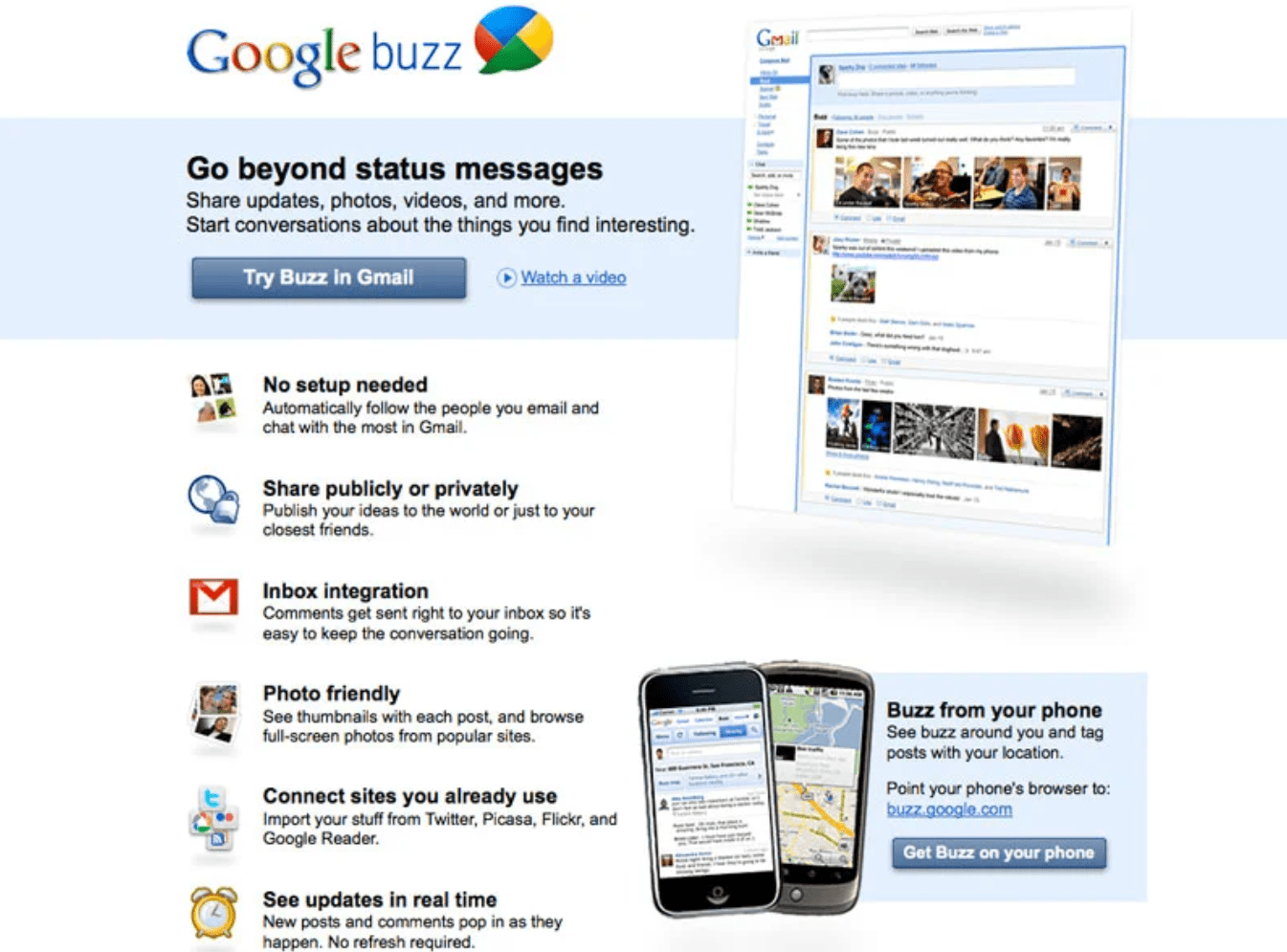
I considered copying and pasting the previous slide, but I couldn’t write this article without telling you about the short life of Google Buzz. And I mean short. Google Buzz was announced on February 9, 2010, and was subsequently shut down on December 15, 2011. It lived long enough to be hit with a class-action lawsuit from users who thought the launch of Buzz was a violation of Gmail users’ privacy.
Among various concerns, the potential public display of “follower/following” lists “appeared to divulge a Gmail user’s most frequent email contacts without sufficient consent.” Google also got a slap on the wrist from the FCC, which charged the company with Deceptive Privacy Practices for not letting users fully opt-out of the social app, which was integrated into Gmail at launch.
Google quickly made changes to Buzz to address some of these concerns, but the social app meant to contend against Facebook and Twitter was already doomed. Buzz had lost any goodwill associated with being a Google product and was eventually replaced by Google+ before hitting its two-year anniversary.
Google+
Now we’re onto failed social network number…I’ve lost count. Google+ was undoubtedly the most ambitious attempt to take on Facebook. Its emergence led, in part, to the closure of Orkut (another failed social app), Buzz, and Google Friend Connect. Determined to finally break into the market, Google poured all of its resources into Google+ in the hopes of attracting Android, YouTube, and Chrome users to a single platform.
Google+ wanted to be the next Facebook, the one app you use to communicate with friends, post photos, and find news. It organised its main tabs into Profile, Hangouts, Photos, Circles, Streams (friend groups), and more. Streams were like Facebook news updates for Circles, which were groups of people organised into categories (like subreddits, in a way). There were also options for video group chats and group text messaging. Unfortunately, Google+ never scaled up like its competitors and was the subject of two significant data leaks prior to its shutdown.
Though it ultimately failed, the platform survived longer than Google’s previous efforts, vanishing in 2019 after a seven-year run. The only remnant of Google+ is Google Currents, an app for corporate communications that, you guessed it, is set to shut down next year.
Google Video
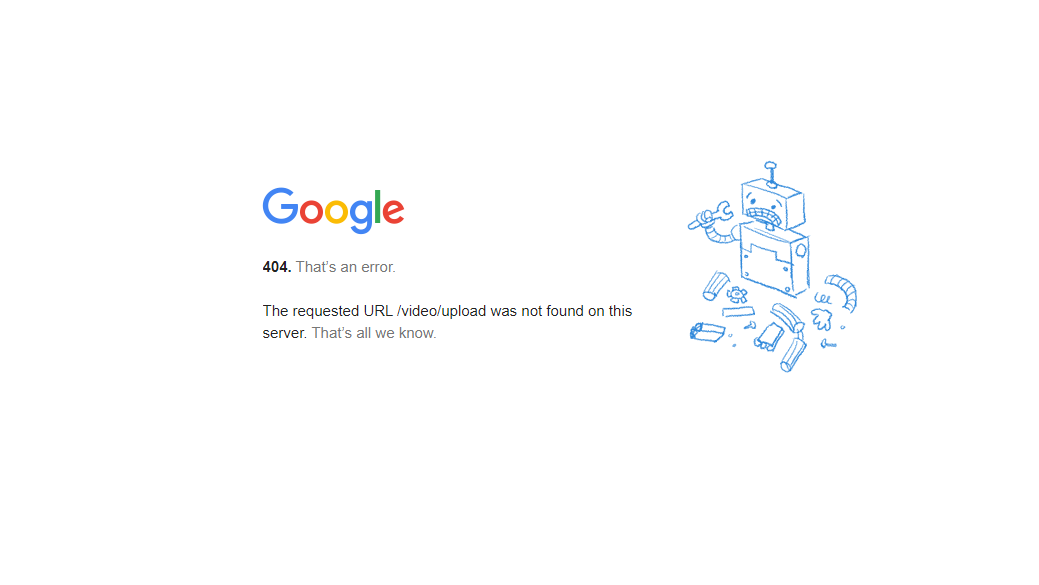
If you can’t beat them, buy them. Google Video was an in-house effort to take on YouTube, the leading free video-sharing platform at the time (and still today). Launched in 2005, Google Video allowed videos to be uploaded onto Google servers and embedded onto other websites. Along with amateur videos, the platform was meant to host commercial professional media, like TV shows and movies. Despite allowing free uploads for a wide range of formats, Google Video couldn’t keep up with YouTube and amassed only 2.8 million uploads in its seven years of existence.
When Google acquired YouTube in 2006, it all but signalled the demise of Google’s own video site. However, it was a slow, agonizing death for the platform. Within months, Google began merging Video with YouTube, but it wasn’t until 2009 that it stopped uploads. Google Video lived on for another two years before Google shut it down for good.
Project Ara

I’m taking a bit of a liberty here, considering Project Ara was never released to the public. However, its disappearance was as disappointing as seeing a gorgeous concept supercar at an auto show only for it to be released as a station wagon. Ara, a prototype smartphone, was all about modularity, or the ability to swap out parts for others. Much like the very real Framework Laptop, the vision for Project Ara was for modules and components to be sold on the marketplace so users could upgrade their phones without buying a new one.
It was essentially a smartphone built from Lego-like bricks that could be easily swapped out. You could have theoretically removed a camera module for a newer one or kept an extra swappable battery on hand. Even more niche add-ons were proposed, like medical monitors or gaming accessories. The benefits of Ara were clear, but despite promising to send out developer units in the fall of 2016, Google decided instead to shut down its development.
Knol
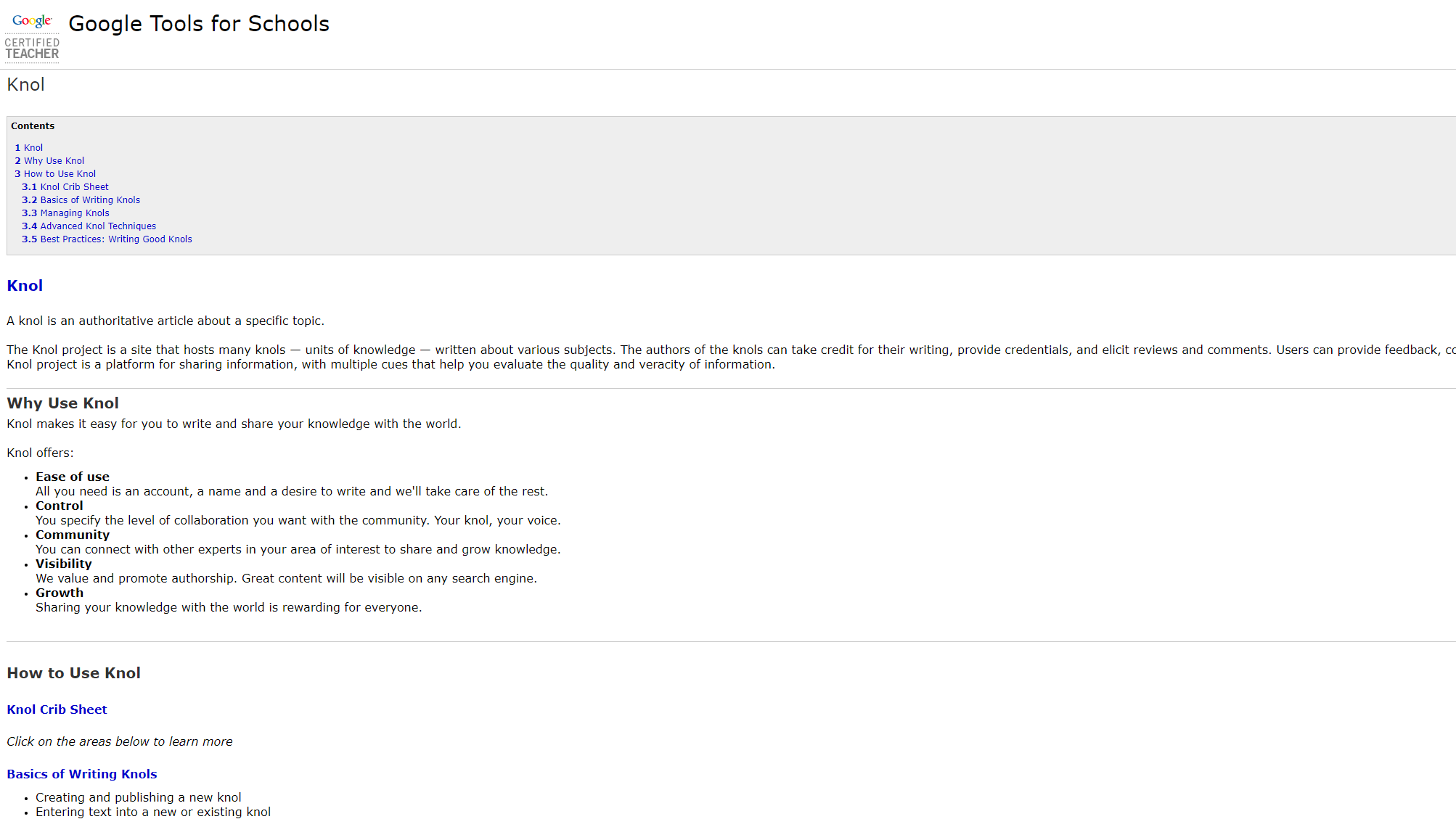
Search for any subject on Google and one of the first, if not the first, entry will be from Wikipedia. If Google had its way, a search would instead have led you to Knol. Much like Wikipedia, Knol compiled user-written articles on a wide range of topics and promised contributors a revenue stream. That is, if you wrote content worth reading, you could have made some cash from it. Google just didn’t put much effort into the website, and without the proper resources, Knol faded into the background as Wikipedia grew its database empire.
About four years after launching Knol, Google announced that knols (a unit of knowledge) would no longer be viewable, and urged content creators to download and export them. On October 1, 2012, the service was dissolved.
Lively
One million points to anyone reading this who made a virtual space in Google Lively (the points don’t matter, obviously). Considered a potential rival to Second Life (which remains popular to this day), Lively was a browser-based (IE and Firefox) digital 3D world where you could access information or chat with others by entering a room. Up to 20 people could be in a room at any point, where their avatars could communicate via cartoon-style bubbles.
The real appeal to Lively is that a room could be embedded onto a website much like a YouTube video. So a forum about soccer could consist of you entering a virtual soccer field to chat with jersey-wearing sports fans about the lame Champions League Final between Liverpool and Real Madrid. It just never caught on, and based on this scathing op-ed from Slate, we should all be glad.
The ironically named Google Lively survived a brief four months before being completely shut down. It never got out of beta and had only 10,000 active users when it was cancelled.
Answers

Pay for answers? No way! That’s why we have Google. Or, erm, wait, you mean Google wants me to pay? It did with Google Answers, a service that let people submit questions to experts for a fee. You could submit a question and specify how much you were willing to pay for answers (from $US2 ($3) to $US200 ($278)). One of 500 researchers would then be selected by Google to work on your question. It stuck around for a few years, but Answers never reached the popularity of Yahoo. In the end, people looked for free answers from an open community, not thoroughly researched ones from people who are well-versed on a subject. It all sounds a bit familiar.
